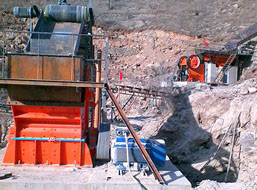A Mobile Vibration Cleaning Sieve is a versatile piece of equipment used for separating, grading, and cleaning bulk materials such as grains, seeds, sand, minerals, and other granular products. It combines mobility with vibration screening technology to enhance efficiency in agricultural, mining, construction, and recycling applications.
Key Features:
1. Mobility
– Mounted on wheels or a trailer for easy transportation between job sites.
– Ideal for farms, construction sites, or temporary processing locations.
2. Vibration Mechanism
– Uses an electric or diesel-powered vibratory motor to generate high-frequency vibrations.
– Ensures efficient material separation by reducing clogging and improving throughput.
3. Multi-Layer Screening
– Adjustable mesh screens (single or multiple layers) for different particle sizes.
– Removes impurities (dust, stones, debris) while sorting materials by size.
4. Durable Construction
– Made from stainless steel or heavy-duty steel for corrosion resistance and longevity.
– Reinforced frame to withstand continuous operation.
5. Easy Operation & Maintenance
– Simple controls for adjusting vibration intensity and screen angle.
– Quick-release screens for easy cleaning and replacement.
6. Applications:
– Agriculture: Cleaning grains (wheat, rice, corn), seeds, and fertilizers.
– Mining & Quarrying: Sorting crushed stones, sand, ores.
– Recycling: Separating plastics, metals, and waste materials.
 Advantages Over Static Screens:
Advantages Over Static Screens:
– Portability: Can be moved to different locations as needed.
– Higher Efficiency: Vibrations prevent material buildup on screens.
– Versatility: Adjus le settings for various materials and particle sizes.
le settings for various materials and particle sizes.
Popular Models & Brands:
– Trommel Screens (rotary drum sieves with vibration).
– Linear Vibrating Screens (for precise grading).
– Brands like Derrick®, SWECO®, and custom-built mobile units from industrial suppliers.
Would you like recommendations based on specific material types or capacity needs?




